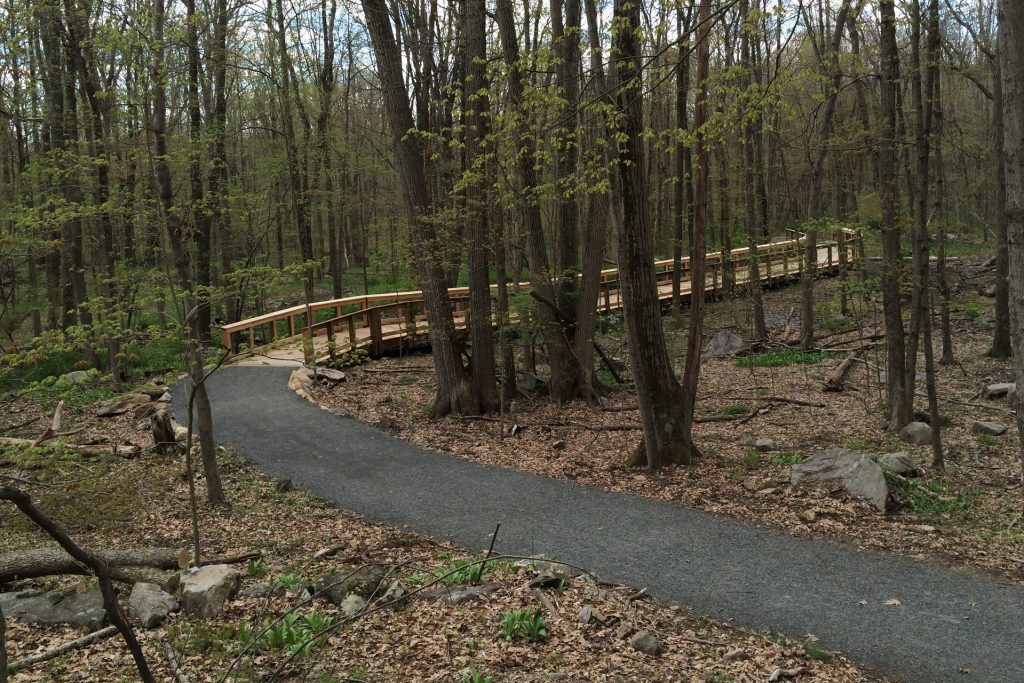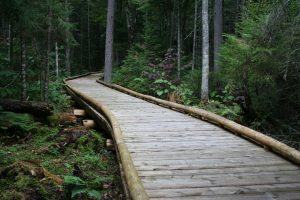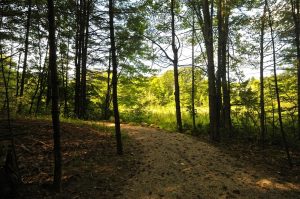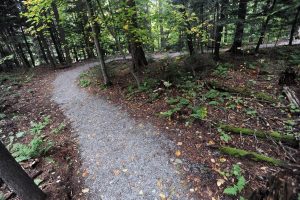
Wilton Center Loop Trail, Norwalk River Valley Trail, Wilton, CT: This 10′ wide naturally surfaced trail winds through a mature forest of stately White Oaks and Shagbark Hickory. The 160′ elevated Black Locust boardwalk allows trail users to traverse a wetland area.
Multi-Use/Accessible Trails and Pathways
Naturally surfaced trails and pathways are Timber & Stone, LLC’s signature product. Typically, multi-use trails range from 3-10 feet wide depending on the needs and number of anticipated trail users. Wider trails in more densely populated areas allow for multi-directional travel by pedestrians, bikers, and runners. No matter the width, a naturally surfaced trail provides for a durable and safe tread while maintaining the character of the landscape.
Multi-use trails that are created with universal access as a priority are designed and constructed using the Accessibility Guidelines for Outdoor Developed Areas. During the design phase, close attention is paid to the natural topography and unique features of the landscape. The result—a trail with gentle slope and curvilinear design that accesses points of interest throughout. In short, a trail that does not compromise a quality user experience while creating access for all individuals—regardless of mobility.
“The quality of the work, attention to detail, and care and concern for integrating the trail into the environment is extraordinary and speaks for itself…Timber & Stone, LLC will be an asset to any project.”
—Rob Houseman, Director of Planning and Development, Town of Wolfeboro, NH

John Dillon Park, Long Lake, New York: This 325′ elevated boardwalk was constructed as part of the trail system at this fully accessible park and campground in the Adirondacks.

Front Bay Park, Wolfeboro, New Hampshire: This trail system is one mile long and was specifically designed to be accessible to all.

Spruce Peak Pathways, Stowe, Vermont: This 1.5 mile network of three foot wide, naturally surfaced trails serves walkers and trail runners.
